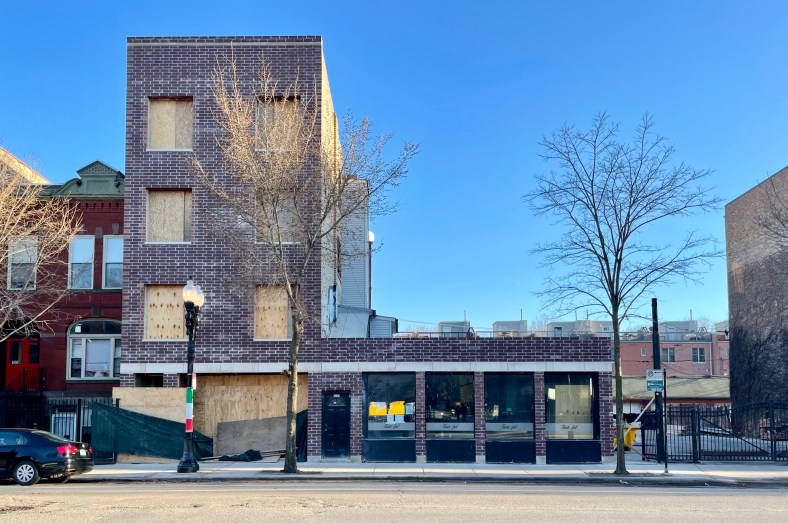Show your support for a version of the proposed ordinance that enables equal access to ADUs in all residential zoning districts and does not have the carve out explained below by emailing your alderperson and asking that they support ADU expansion into every residential zoning district without special use approval.
It’s possible that the Chicago City Council votes to approve an ADU expansion ordinance that would require about 38 percent of small-scale residential property owners, specifically in RS-1 and RS-2 zoning districts, to obtain a special use from the Zoning Board of Appeals to build an ADU. Special use approval is intended for limited and certain businesses and building types that can have an adverse impact and may require mitigations that are reviewed and approved by the ZBA.
ADUs have not been demonstrated to have adverse impacts and this potential future requirement would impose burdens on a scale above and beyond anything else the Chicago zoning code imposes. A special use is described in the city’s code as having “widely varying land use and operational characteristics [and] require case-by-case review in order to determine whether they will be compatible with surrounding uses and development patterns. Case-by-case review is intended to ensure consideration of the special use’s anticipated land use, site design and operational impacts.”
Yet an ADU is a residential use; its operational characteristics could not be incompatible with other residential uses. This requirement would be extremely unusual and especially burdensome. There is only one other special use approval that a residential property owner would have to seek, which is to allow housing on the ground floor in B1, B3, C1, and C2 zoning districts.
Applying for a special use for a small home presents a major obligation to the property owner, and requires them to perform the following:
- Submitting a full building permit application with plans and obtaining a “certificate of zoning denial” before being able to start this process.
- Paying a $1,000 application fee to the City of Chicago.
- Hiring an expert witness to write a report and provide testimony at the ZBA hearing.
- Preparing the finding of fact, a report which (a) describes how the ADU complies with all applicable standards of the Chicago Zoning Ordinance, (b) says that the ADU is in the interest of the public convenience and will not have a significant adverse impact on the general welfare of the neighborhood, (c) explains that the ADU is compatible with the character of the surrounding area in terms of site planning and building scale and project design, (d) states that the ADU is compatible with the character of the surrounding area in terms of operating characteristics, such as hours of operation, outdoor lighting, noise and traffic generation, and (e) outlines that the ADU is designed to promote pedestrian safety and comfort.
- Preparing the application (which is extensive).
- Complying with onerous legal notification requirements including determining property owners of record within 250 feet of the subject property, paying for and posting public notice signs and ensuring they remain posted until the public hearing, and mailing notice letters to surrounding property owners within the 250 feet notice radius.
- Presenting the project to the Zoning Board of Appeals at an undeterminable time during an 8-12 hour meeting in the middle of a Friday, possibly facing one’s neighbors who are present objecting to the project.
Not to mention, this will gum up staff time and expertise.
Scale of impact
I analyzed the number of small-scale residential-only properties in Chicago that would and would not be subject to the special use approval requirement in RS-1 and RS-2 zoning districts if that version were to pass.
The map below shows where the proposed ADU expansion would set a different standard for homeowners in RS-1 and RS-2 zoning districts than for homeowners in all other zoning districts. It covers large parts of 40 percent of the city’s 77 community areas (read more about my thoughts on this in my letter to the Chicago Sun-Times editor).

The table below shows the results of my analysis: the owners of nearly 171,000 small-scale residential properties in RS-1/2 zoning districts would be required to undergo a costly and difficult process that would likely result in burdens so great that very few families would actually be able to take advantage of having an ADU.

About the analysis
“Small-scale residential” comprises Cook County property classifications that represent detached houses, townhouses and townhouses, two-to-six flats, courtyard buildings, and small multifamily buildings, up to 99,999 s.f. with or without commercial space up to 35 percent of the rentable square feet.
The full list of property classifications:
- 2-02
- 2-03
- 2-04
- 2-05
- 2-06
- 2-07
- 2-08
- 2-09
- 2-10
- 2-11
- 2-12
- 2-13
- 2-25
- 2-34
- 2-78
- 2-95
- 3-13
- 3-14
- 3-15
- 3-18
- 3-91






